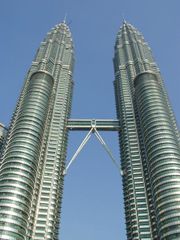Ironing
Ironing, derived as are modern business suits and certain poodle haircuts from the Victorian era, is an extreme sport which may yet burst with internal pressure onto the Olympic stage.
| “ | A long time ago, people needed their laundry to be crisp and wrinkle-free. Now, nobody cares. Appearance has been shouldered rudely aside by the sudden importance of image. I, for one, decry the rise of this ridiculous pastime and its corresponding conspiracy to ignore personal pride and common sense. ~Dr. Benjamin Spock, 1958 | ” |
Simply, ironing is the unusual mechanical process of applying heat and pressure to an article of clothing or linen, with the purpose of making the said article smooth and therefore attractive. Imaginative places and ways of achieving this humble goal are, however, what has catapulted the sport to international acclaim.

History
While ironing was originally conducted by women — misleadingly labeled as ‘washerwomen’ and thereby causing no end of difficulty for amateur historians — the modern sport is dominated by the male sex. Obvious exceptions, however, clearly demonstrate that Women’s Lib is alive and well: men cannot ever hope to fully and painfully grasp this warm historic activity to their collective bosom. The rise of ironing as an international sport can be directly traced to the increase in disposable income following the Second World War. Its trickle-down effect of consumers being able to afford professional laundry and drycleaning services made home ironing obsolete. Some dedicated practitioners, however, held onto their traditions, and, justly proud of them, demonstrated their proficiency to other citizens by ironing in public locations.

With the scaling of Mt. Everest, the invention of the nuclear submarine and the tapping of the oceans’ secrets, and the discovery of subatomic particles came the need for microdistinctionists to set themselves apart from their fellows: they began ironing on cliffsides, suspended on the back of transit vehicles, and in the depths of coalshafts. Countless amateur imitators sprang up in sedentary locations such as hallways, kitchens and living rooms. Televised contests began on ABC in 1976, and the World Series of Ironing was founded by ESPN in 1998.
Purists, though, insist that recent innovations such as underwater ironing are outside the scope of the sport…and are at times ridiculous. Underwater ironing has also been known to result in death by electrocution, something that tends to discourage the entry of new participants into the highly competitive field of extreme ironing.
Popular Culture
Ironing has been featured in countless works of art and feature films in the past century. Picasso’s Guernica prominently features a folding ironing board and faces in pain as a metaphor for the horrors of war.
Perhaps the most prominent example of ironing in popular culture is its inclusion in the 1979 film Apocalypse Now. An officer conjoins his passion for the sport with warmaking as he thrills in discovering famous ironers from home and engaging them in ironing in new and dangerous territory even while the fighting goes on about them. Discussions about whether the younger men about him prefer a heavy or a light board, or (albeit short-lived) philosophical inquiry into the morality of ironing rather than fighting, mark the scene.
Also, few who have viewed the longer version will forget Robert Duval as Lt. Col. Kilgore later sending his attack helicopters over the riverside treetops of Vietnam, PA systems blaring his admonition to the thieving Captain Willard: “I will not hurt or harm you. Just give me back the board, Lance. It was a good board — and I like it. You know how hard it is to find a board you like.”
Jacques Brel’s song Les Flamandes sharply remonstrates his Dutch neighbors for cooperating with the NAZIs and enjoying ironing a little too much.
Temptation Inside of Your Heart, Lou Reed told Rolling Stone magazine in a 1988 retrospect of Velvet Underground tunes, was entirely about ironing—the ad-libbed line “Electricity comes from other planets!” in the live recording, he revealed, was a direct clue.
The list goes on and on.
Famous Ironers
Stiltkicker — Certainly English, unorthodox underwater ironer often found at the bottom of a bog with iron in hand. Maintaining his anonymity and remaining mute for the sake of personal safety, Stiltkicker represents what purists call the ‘far-out’ and ‘improper’ new methodology.
Betty McGuile — Far from the dreams of a little girl in Wyoming, Betty is today’s leading feminist propagator of the sport. Fierce and intimidating, she has won ESPN’s World Series of Ironing four times (two consecutively, in 2001-2). She leads the Series with an all-time astounding high of 7,665 points earned at the 2001 Final for ironing a men’s pinstriped, French-cuffed Hathaway dress shirt atop the 42nd story skybridge of the Petronas Twin Towers in Malaysia, which she reached using harness and crampons in 4 hours 27 minutes, and employing a Maytag SuperSteam500 machine set at the risky temperature of 435 deg. F.
Hiriyuki Umino — Brash, youthful and prone to screaming at his opponents across the chasm, Umino is the world’s foremost mountainside ironer. “Get off my mountain before I banish you to the land of wind and ghosts!” he was caught yelling at another ironer in the 2003 season — for which he was fined $500 and 75 points. He thus placed fourth in that season instead of third, but did not learn his lesson.
| “ | The age-old phenomenon of sport is not just for the extremely athletic or the drunken tailgateres massed around a football stadium on a Sunday morning: sport is what you make of it. ~Steve Polk in Life & Arts: Advocate (student newspaper at University of Colorado at Denver, 12/07/05) | ” |
Requirements and Selected Rules
World Series of Ironing Official Rules, © 1998, 2006 (Revised)
1.0 The only requirements for the sport of ironing are an iron, board, and article of clothing or linen.
1.1 Iron
The iron shall be an object of any reasonable shape, size and material suitable for the conducting of heat, and to be carried and utilized by an individual.
1.2 Board
The board may composed of any relatively smooth and level object, including commercially-available ironing boards, terrain in the athlete’s chosen location, found material, or suitable items brought with them.
1.3 Article of Clothing or Linen
The article of clothing or linen must be in good repair and of such size as to be usable by an adult. Children's articles or those in unwashed and/or poor repair are not permitted.
(…)

3.0 Scoring
Irons must conduct heat to the article of clothing or linen. The iron’s effectiveness is to be determined by random testing. Athletes found using non-conducting irons are disqualified.
3.1 Location Difficulty
The athlete shall be awarded points in proportion to the difficulty of ironing in the location they has chosen. For example, ironing on a crowded sidewalk might earn 15 points, whereas ironing halfway up a 1,500-foot high cliffside on a ledge reached only by the athlete free-climbing while carrying all the necessary material on their back might earn 350 points.
(…)
3.6 Visual Appeal
The quality of the athlete’s ironing is the second pillar of the sport. Points shall be awarded in proportion to the rapidity, effectiveness and general initial and final appearance of the article being ironed.
3.6.1 Burns
A burn is a discoloration and/or consumption of material caused by excess transfer of heat from the iron.
3.6.1.1 Burns to Article
Should an article be burned during ironing, 500 points shall be deducted per burn.
3.6.1.2 Burns to Others
Should a bystander, participator or other athlete be burned, the athlete shall be disqualified for the season.
Technological Innovations
Ironing has been vastly improved as a sport, both in speed and interest, over the past half-century by such technological innovations as the:
- electric iron (eliminating the need to build an open-flame heat source)
- generator (to power the electric iron in remote locations)
- waterproofing (enabling the oft-maligned division of underwater ironing)
- extreme steam (improving the rapidity of the ironing process)
- lightweight boards
- children’s toys / warm-up kits.
The Games Portal
Highlighted Article (view all...)
You can nominate your favorite articles and images on the Games Nominations Page.
|





